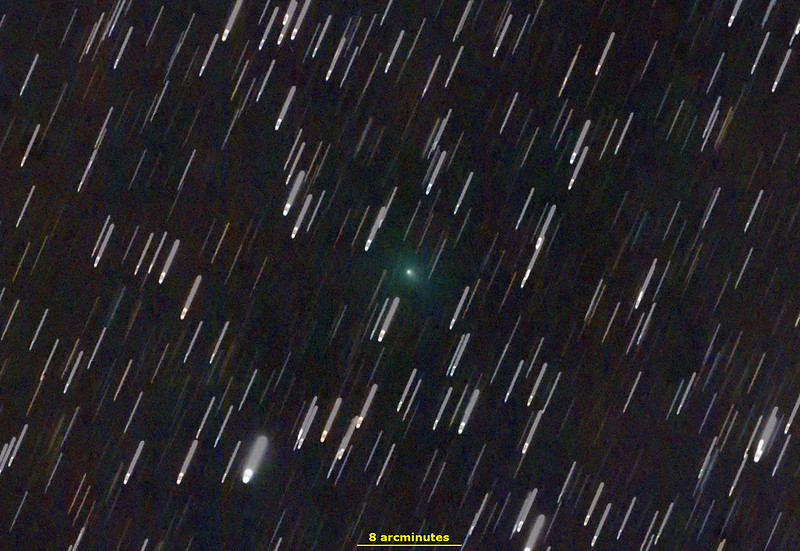Good news: Though we’ve been going through a cometary dry spell as of late, we may have our first good naked eye comet for 2020: Comet C/2019 Y4 ATLAS.
Discovered by the ATLAS (Asteroid Terrestrial-impact Last Alert System) survey on the evening of December 28th, 2019, Comet Y4 ATLAS was the last comet discovery of 2019. Though it was only at magnitude +19.6 at the time of discovery, the orbit of Y4 ATLAS is intriguing, bringing it in just 0.262 AU (39.2 million kilometers or 24.4 million miles) from the Sun in late May 2020. That’s interior to Mercury at perihelion, at 0.307 AU from the Sun. This comet also grabbed observer’s attention in January 2020 when it jumped 5 magnitudes to +12, or 100-fold in brightness.
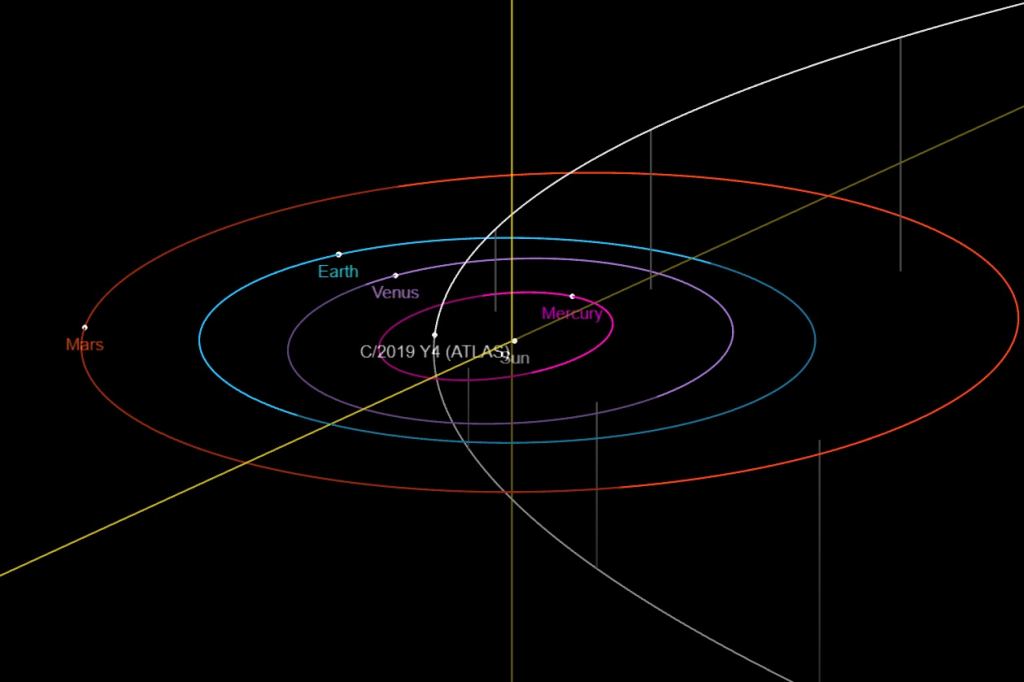
Generally speaking, 3 telling factors separate the great comets from the herd of faint comets that are discovered every year:
-1. Is it discovered while it’s still in the distant solar system, say, beyond the orbit of Jupiter or Saturn?
-2. Is it due to pass close to Earth?
-3. Will it enter the inner solar system (as in interior to the orbit of Mars) near perihelion?
The saga of comets Hale-Bopp and Hyakutake in the late 1990s gave us dramatic and contrasting examples of these rules. Hale-Bopp was discovered years prior while still in the distant solar system, suggesting it was a large and potentially bright object. But while we were all anxiously awaiting Hale-Bopp, Hyakutake came seemingly out of nowhere, and put on an amazing show as it passed just 0.1 Astronomical Units (AU) or 9.3 million miles from the Earth.
On an estimated 5,467 year orbit, Comet Y4 ATLAS last visited the inner solar system sometime back in the late 4th millennium BC, and will next grace our skies in the late 76th century AD. The comet’s orbit is inclined 45 degrees relative to the ecliptic, and it just passed opposition on February 17th. At its closest, the comet will be moving at 2 degrees per day through the sky in late May, about four times the apparent diameter of the Full Moon.
The best shot at seeing the comet is mid-May at dusk for northern hemisphere observers, as the comet heads towards perihelion. Unfortunately at its brightest, the comet is bashful in late May through early June, hugging the horizon at dawn.
This comet’s orbit is also similar to the Great Comet of 1844-1845 (C/1844 Y1). Perhaps, the two are fragments of a larger comet. Back in the day, that particular comet attained near +1st magnitude in late 1844 going into 1845. The Great Comet of 1844 was, like many comets of the day, independently discovered by several southern hemisphere observers nearly simultaneously, and even spotted by sailors aboard a British vessel offshore from New Zealand. It seems that the 19th century was replete with “Great Comets…”
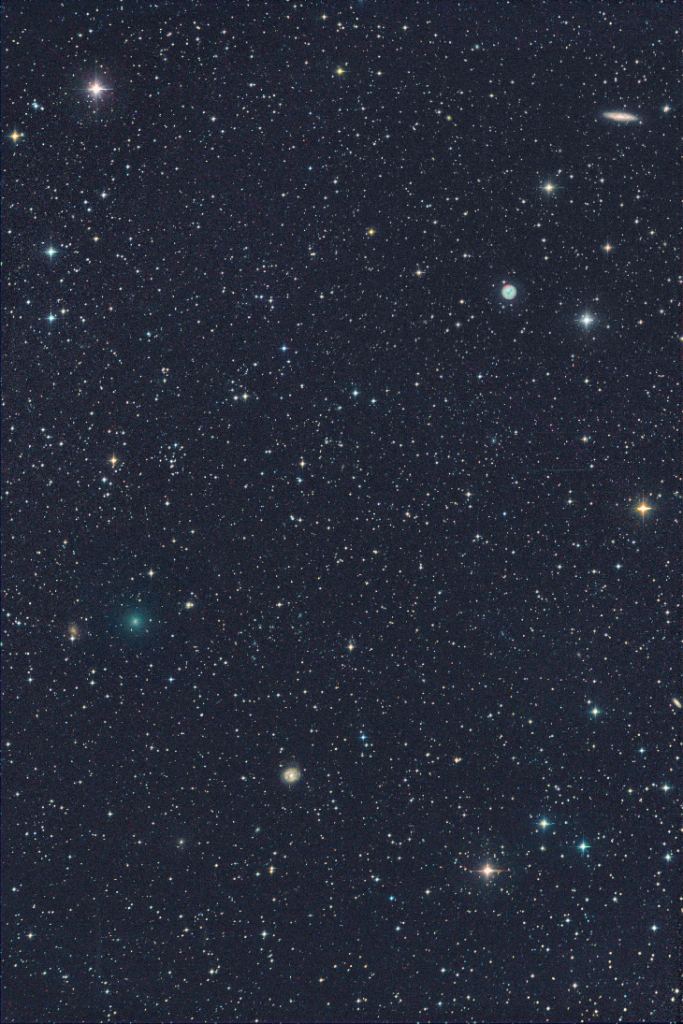
Here’s our look at dates with celestial destiny for Comet C/2019 Y4 ATLAS through its 2020 apparition. Unless otherwise noted, we say ‘near’ for a pass of less than one angular degree:
February
25-Near the Owl Nebula (Messier 97) and the galaxy Messier 108 in the constellation of Ursa Major the Great Bear.
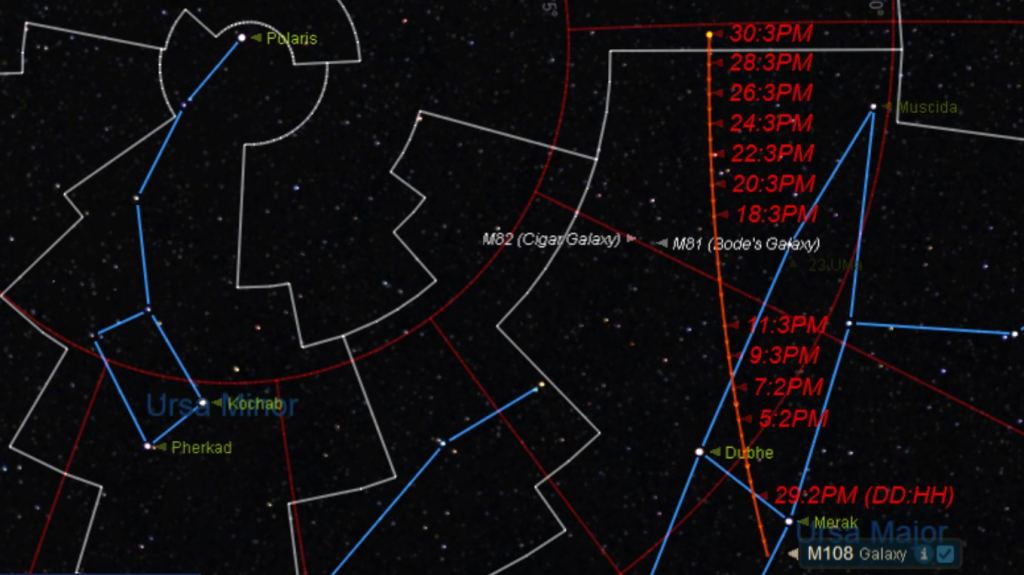
March
17-Passes 3 degrees from the galaxies Messier 81 and Messier 82.
29-Reaches its farthest point north, at less than 22 degrees from the North Celestial Pole, making the comet circumpolar north of latitude 22 degrees north (the northern half of Asia, and all of Europe and North America).
30-Passes into the constellation of Camelopardalis the Camel Leopard.
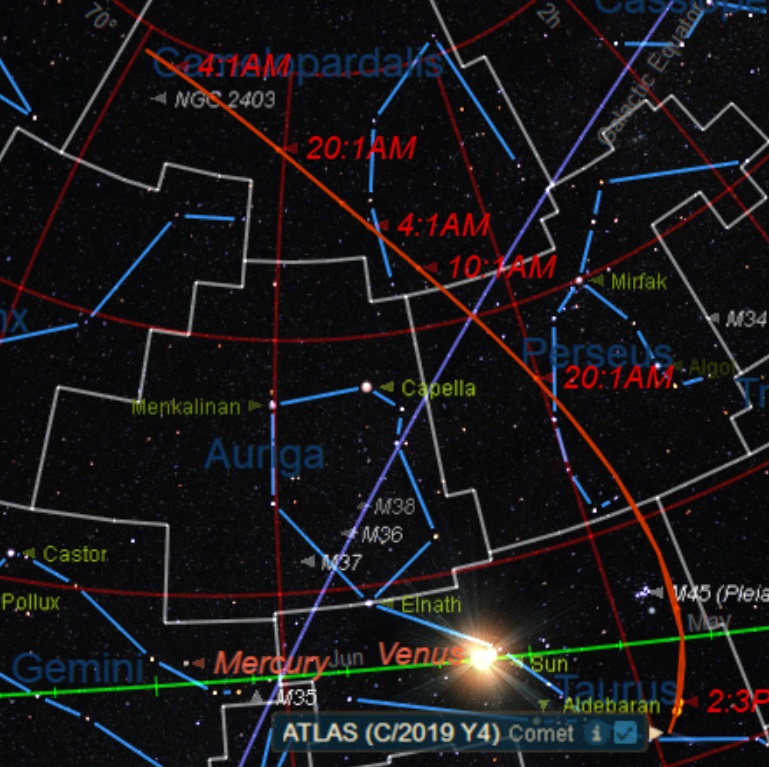
April
3-Passes 3 degrees from the galaxy NGC 2403.
15-May break +10th magnitude.
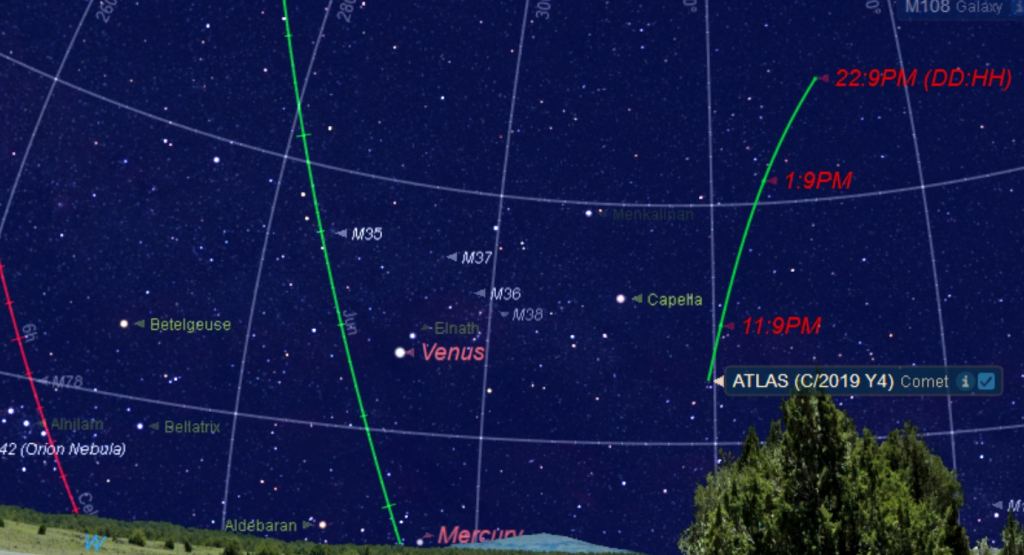
May
12-Crosses into the constellation of Perseus the Hero.
15-Tops +6th magnitude.
16-Crosses the galactic plane southward.
23-The comet’s ecliptic longitude equals the Sun’s, as the comet flips over from evening to low in the morning sky.
24-Closest to Earth, at 0.781 AU distant.
25-Passes the +3.8 magnitude star Omicron Persei.
26-Crosses into the constellation of Taurus the Bull.
28-Passes 11 degrees from the Sun as seen from Earth.
29-Passes near the Pleiades open star cluster Messier 45.
31-Reaches perihelion at 0.262 AU from the Sun.
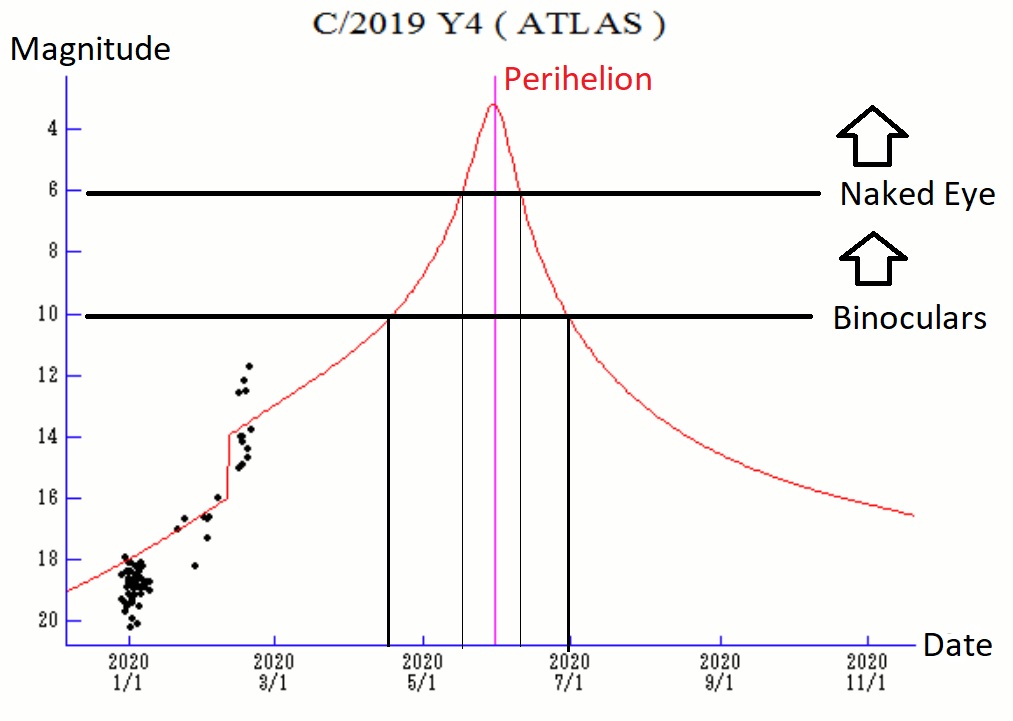
June
1-Crosses the ecliptic southward.
14-Crosses into the constellation of Orion the Hunter.
15-Drops below +6th magnitude.
16-Passes near the +3.7 magnitude star Pi Orionis.
July
1-Drops below +10 magnitude.
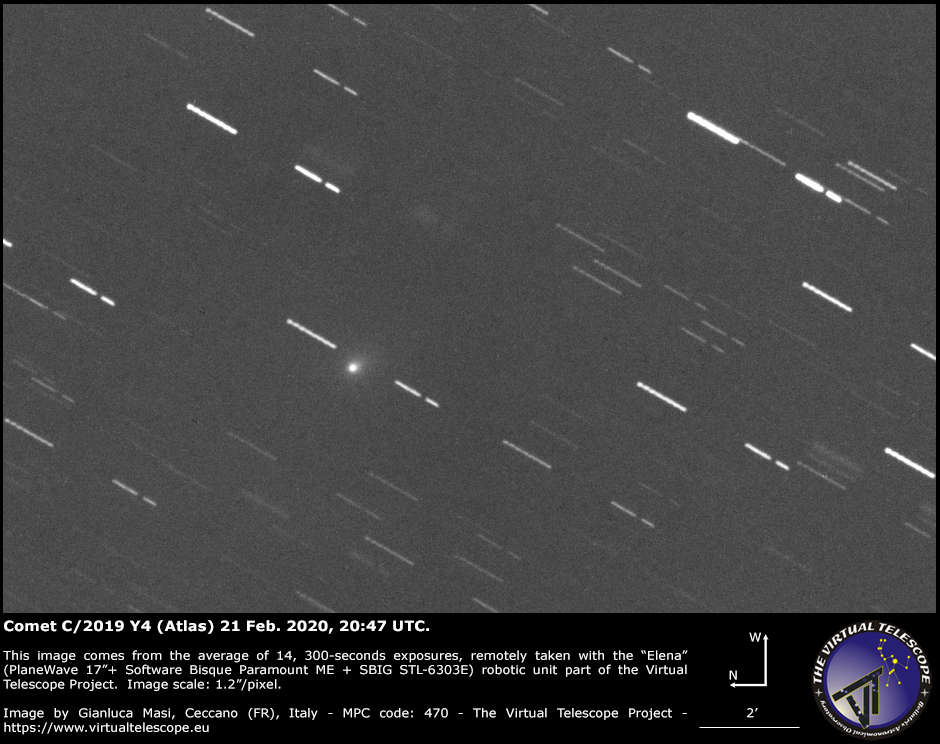
Observing and imaging comets is as easy as sweeping the target field and looking for a suspect fuzzball that refuses to snap into a sharp focus. As Y4 ATLAS nears the Sun in May, it might just sprout a dust tail or a twin ion tail as well. Y4 ATLAS now vies with T2 PanSTARRS for one of the top comets to follow in 2020.
-Lead image courtesy of Hisayoshi Kato.
-Two great resources to see what comets are up to are the Comet Observer’s Database (COBS) and Seiichi Yoshida’s Weekly Information About Bright Comets.
We also have a complete chapter dedicated to observing comets in our book The Universe Today’s Ultimate Guide to Observing the Cosmos.

